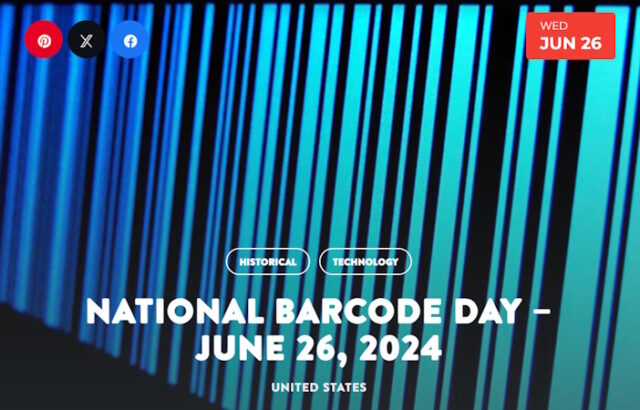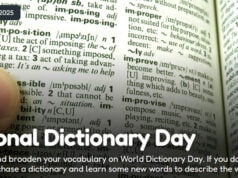
National Barcode Day commemorates 50 years of efficiency and accuracy that began on June 26, 1974, when a clerk scanned a 10-pack of Wrigley’s Juicy Fruit gum at a Marsh supermarket in Troy, OH. On that day, the barcode system invented by George Lauer, an IBM engineer, began to change the world.
- 1940s – In the late 1940s, Bernard Silver and Norman Joseph Woodland began researching solutions to automatically read product information during grocery checkout after a request from the food chain Food Fair.
- 1948 – Inventor Joe Woodland drew the first bar code in the sand on Miami Beach, decades before technology could bring his vision to life
- 1949 – Bernard Silver and Norman J. Woodland patent the idea for the code they developed years earlier.
- 1949 – The First Use of the Barcode Was to Label Railroad Cars
- 1952 – The First Barcode Symbology Was Patented in 1952 & Looks Like a Bullseye.
- 1973 – The Uniform Product Code Council (U.P.C.C.) is founded.
- 1974 – The Very First Scanning of a UPC Code Was on a Pack of Wrigley’s Chewing Gum.
- 1975 – Code39 barcodes are used to label goods across many industries and are often found in the automotive industry and the US Department of Defense. The barcode was developed by Intermec Corporation in 1975. It enables the use of both digits and characters.
- In 1981, US barcode specialists at Computer Identics designed the Code 128 barcode that is used worldwide and is common in sectors like warehousing, transport & logistics, manufacturing and healthcare.
- 1995 – With probably the coolest name for a barcode symbology – the Aztec is a two-dimensional code. The Aztec code was invented in 1995 by Andrew Longacre and Robert Hussey.
- 2004 – In February 2004, the U.S. Food and Drug Administration (FDA) ruled that barcodes must be applied to certain medications.
- Barcodes, also known as UPC, 1-Dimensional (1D) codes, contain data that help businesses and organizations do their jobs more easily.
- A modern version of the barcode is called a QR code, or a 2-dimensional (2D) code. The QR code contains even more data than the 1D code.
- Barcodes contain a wealth of information, including pricing, product, dates, manufacturer, and shipping.
- VINs – Tracking a car’s history became easier when a barcode was added to the VIN.
- Libraries – Barcodes track books, videos, periodicals, and resources in and out of the library.
- Logistics – Every major shipper uses barcodes to track shipments and deliver your orders.
- Healthcare – Barcodes help keep patient care more streamlined and records at the provider’s fingertips.
- Agriculture – Farmers use barcodes to track harvests and livestock.
- Aztec was chosen by the airline industry as the standard barcode for electronic boarding passes.
- In Seattle, QR codes are inscribed on graves that contain a link to detailed information about the deceased person.
- According to the barcode monitoring center, at least five billion barcodes are scanned daily.
- The normal 13-digit barcoding system can create a thousand billion different codes.
Sources:
Disclaimer
The information contained in South Florida Reporter is for general information purposes only.
The South Florida Reporter assumes no responsibility for errors or omissions in the contents of the Service.
In no event shall the South Florida Reporter be liable for any special, direct, indirect, consequential, or incidental damages or any damages whatsoever, whether in an action of contract, negligence or other tort, arising out of or in connection with the use of the Service or the contents of the Service. The Company reserves the right to make additions, deletions, or modifications to the contents of the Service at any time without prior notice.
The Company does not warrant that the Service is free of viruses or other harmful components












